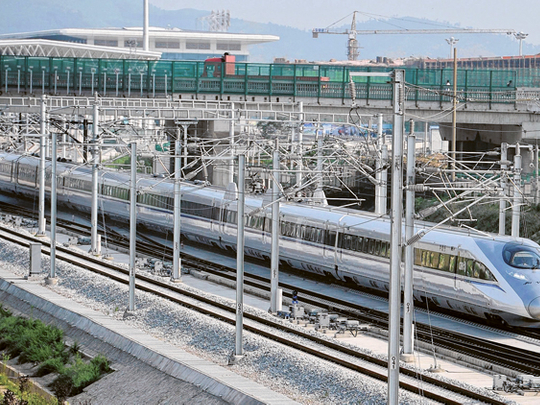
The meetings of the world’s seven largest economies are of critical importance not just to the participants but countries of all shapes and sizes outside of the grouping given the US dominance of the global economy. At their recent meeting in Cornwall, the G7 countries took a number of decisions with vast implications, not least being the resolution on a Global Infrastructure Initiative to rival China’s ‘Belt and Road’ project.
It was expected that the Western alliance would not stand still over China's attempts to dominate international trade routes through Belt and Road. China has already come a long way on its project through the establishment of a road network and development of ports and airports in many countries, particularly at the intersection of global trade routes stretching across Africa, Asia, Europe and the Americas. It allows China to dominate international trade infrastructure.
China’s new high-speed rail service has transported $200 billion worth of goods between China and European countries since March 2020. When China launched Belt and Road, many countries announced their support for and participation, including some EU countries such as Italy. However, during the latest G7 Summit, Italian Prime Minister Mario Draghi said the country will “reassess its participation in China's Silk Road infrastructure network", adding that China does not adhere to multinational rules. It constitutes a reversal of Italy's previous commitments.
In the same direction, India has announced that it will study the US President's Global Infrastructure Initiative, as an alternative to the Belt and Road. India also said that it might cooperate with the initiative at a later stage.
Hardened opposition
These are only two examples pointing to the intensification of the coming conflict between China’s initiative, which has already on, and the American plan, which is still in the crystallization process. In fact, both have strengths and weaknesses that will deepen the conflict and put the rest of the world in complex positions to determine their stance towards the two most powerful economies. This means that each country or bloc needs to examine the extent to which they can benefit from the initiatives, knowing that all of them will be subject to pressure. As was the case with Italy at the G7 summit, a position that was apparent from its announcement to reconsider its participation.
The strength of the Chinese project lies in the centrality of decision-making and the allocation of part of the $2 trillion allocated for its implementation. Some of the Chinese initiative’s projects have begun to see the light, and it is difficult to revert from these projects, particularly as some countries have begun to reap the fruit, like Africa.
The strength of the US project lies in the pressure that Washington has to attract countries to its project, as well as its absolute dominance over international financial transactions and the multiplicity of its allies. Also, the US is dominating global financial institutions, such as the International Monetary Fund (IMF) and the World Bank (WB), which are expected to play role in the implementation of the project’s financing.
Dollar’s influence
Much of the Chinese project depends on unstable countries that suffer from corruption, such as most of the African countries, Iran and Central Asia. The US project will suffer from the contradiction of decision-making between the US, the European Union, Japan, Australia, Canada and, possibly, India. Their positions on many issues, particularly funding, will vary, with the US President proposing hundreds of billions of dollars to counter Chinese influence. This project will also face the sensitivity of some developing countries due to the past colonial legacies, which may hinder their cooperation.
Arab countries, including the GCC nations, will be at the core of the two projects’ attention, due to their geographical location at the center of the world. This requires them to examine both thoroughly to take advantage of development opportunities and harness them to serve their own interests. This is a given as infrastructure is one of the most important foundations of development.
The writer is a specialist in energy and Gulf economic affairs.








